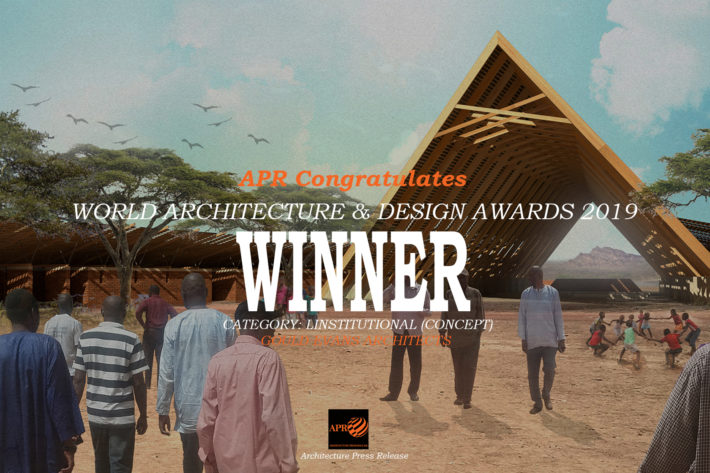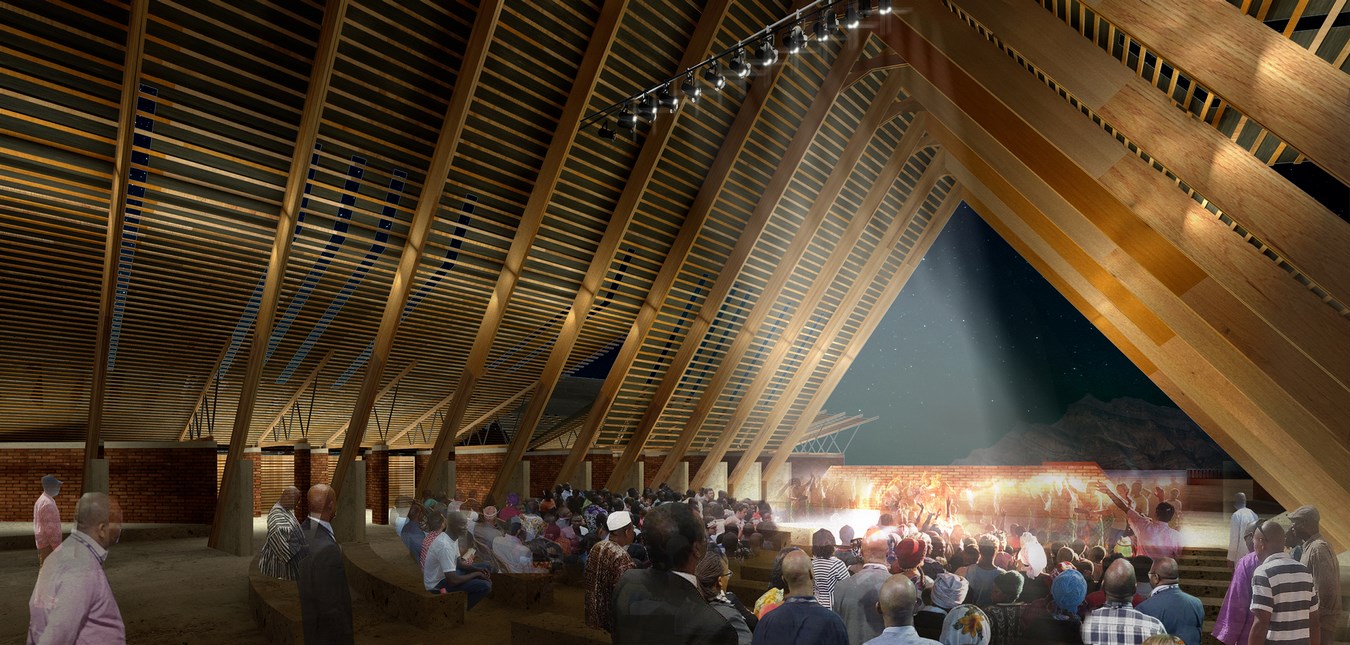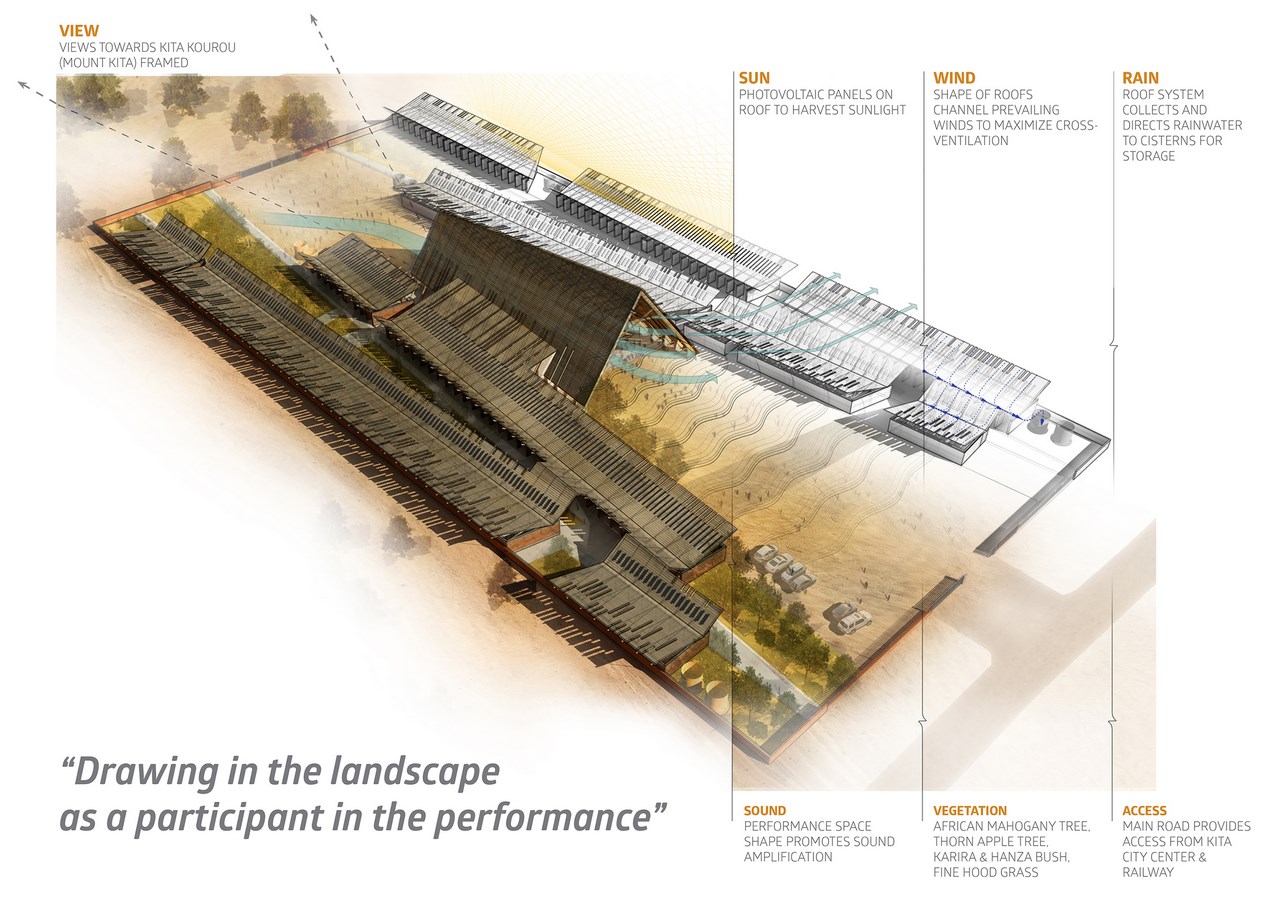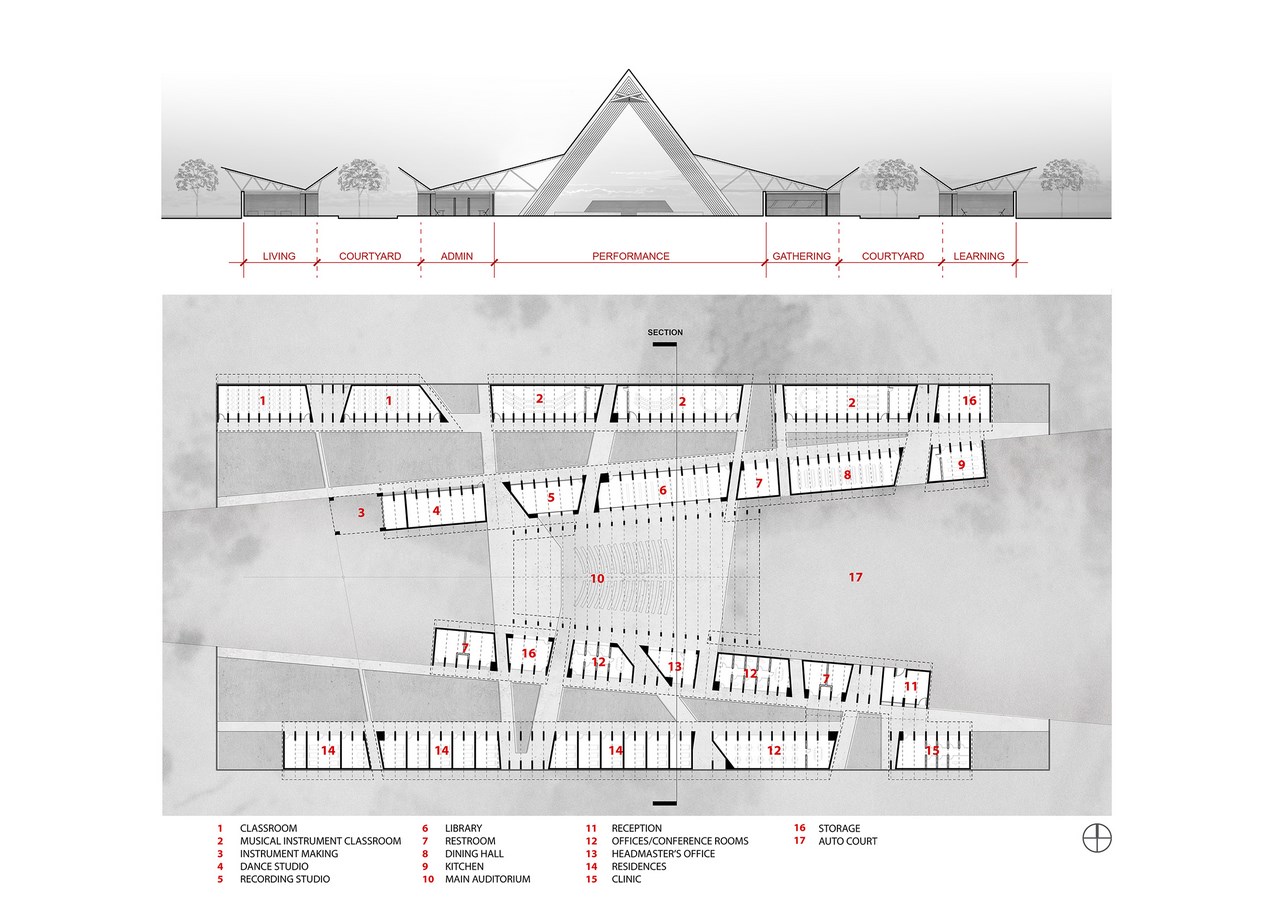The Cheick Hamala Diabaté Institute for the Performing Arts will manifest the dream of Malian griot and musician Cheick Hamala Diabaté. As a respected ambassador, holy man, story teller, and musician, Cheick is the bridge between Malians and their leaders and between the United States and Mali. Since 1995, Malian musician Cheick Hamala Diabete has lived in the United States. He has traveled the world sharing his wisdom, spirit, and good will through his music. He has played with legendary American musicians such as Bela Fleck, Corey Harris and Bob Carlin with whom he partnered on the Grammy nominated “From Mali to America”
(Best Traditional World Music Album, 2007).
World Architecture & Design Awards 2019
First Award | Category: Institutional (Concept)
Architects: Jason Butz
Studio: Gould Evans & Billes Architects
Team Members: Robert Riccardi, Jason Butz, Martin Tovrea, Jason Butz, Brian Webber, Gerald Billes
Country: United States
Website: www.gouldevans.com
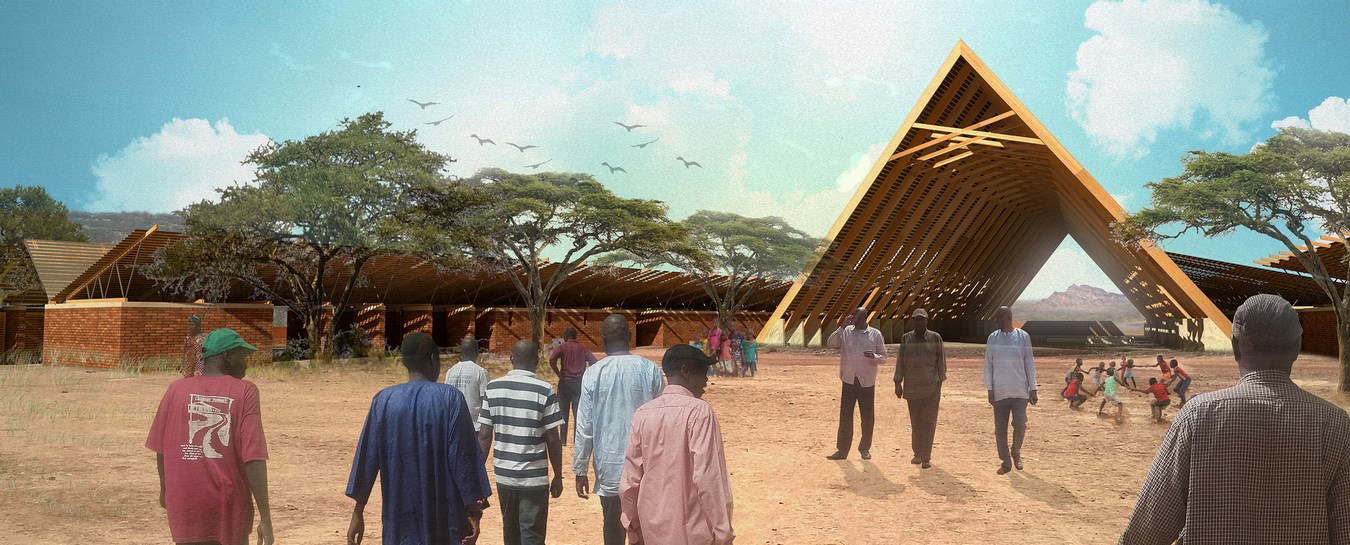
Cheick is also a griot (a member of an 800-year tradition of traveling advisers, storytellers, poets, musicians and oral historians) counseling African presidents, Malian villagers, and members of the U.S. Congress. The Institute will be an extension of Cheick, a real and tangible symbol of Griot culture, a nurturing storyteller promoting people, place and music throughout the world. This is a place of making and celebrating.
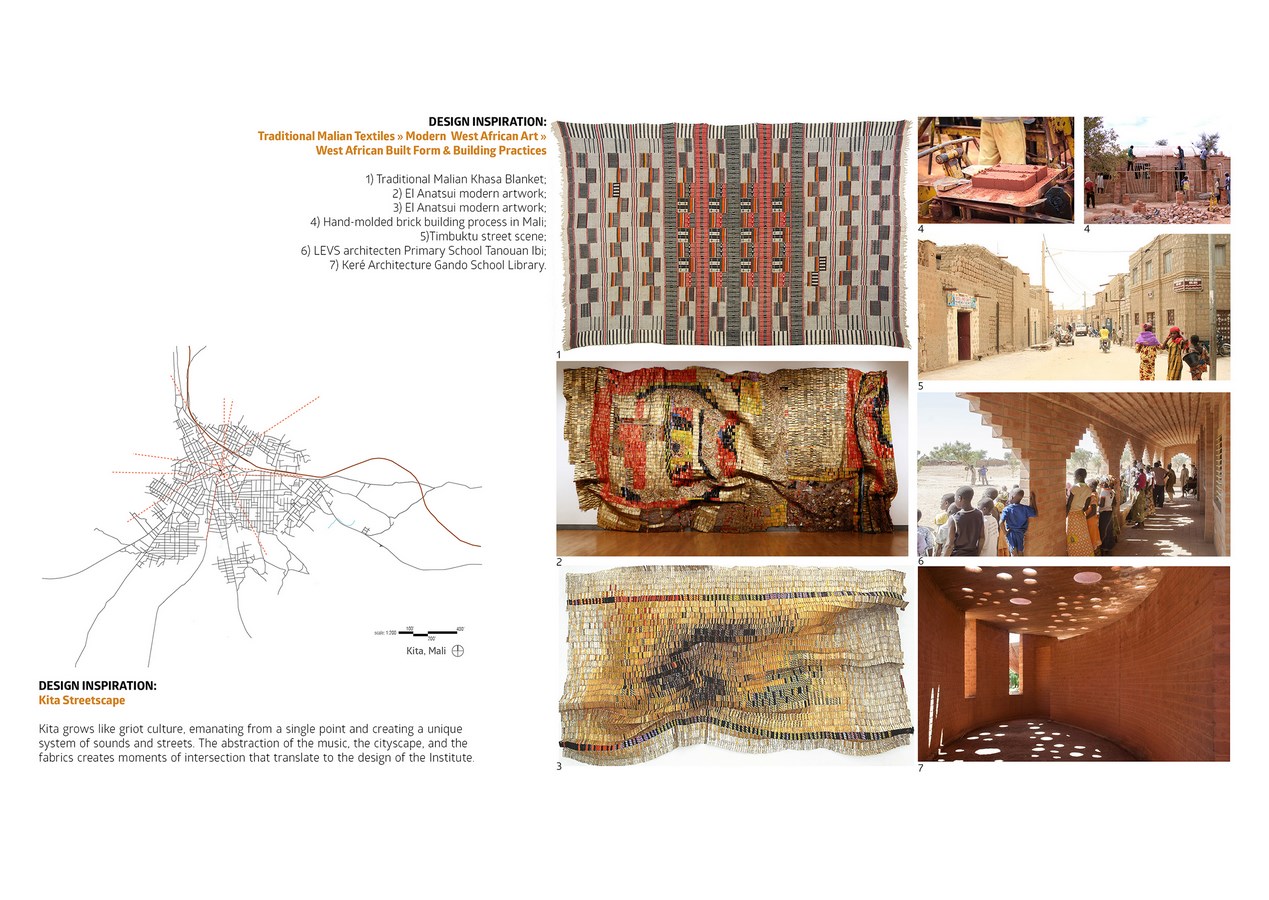
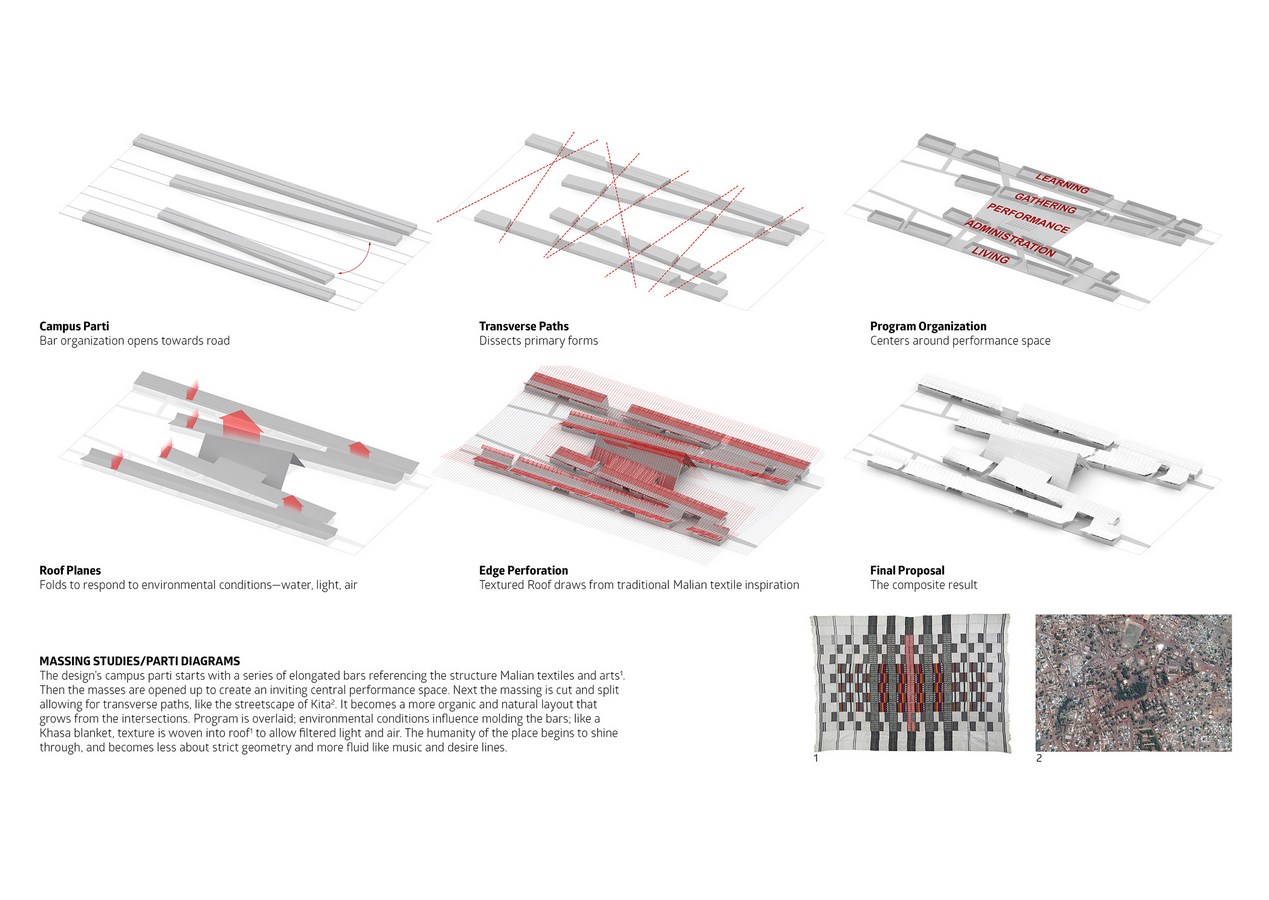
The Institute is located approximately 4 miles from the center of the Kita, a town in remote sub-Saharan, equatorial Africa. The flat site is framed between beautiful rock outcroppings and the famous Niger-Dakar Railway. Diagrammatically, the performance space occupies the complex center; surrounded by four linear building forms that are arranged to create 3 major shaded courtyards: administration & living, performance, and education. The composition pattern references the region’s textile and arts history—from colorful handwoven blankets to the found-object work of El Anatsui.

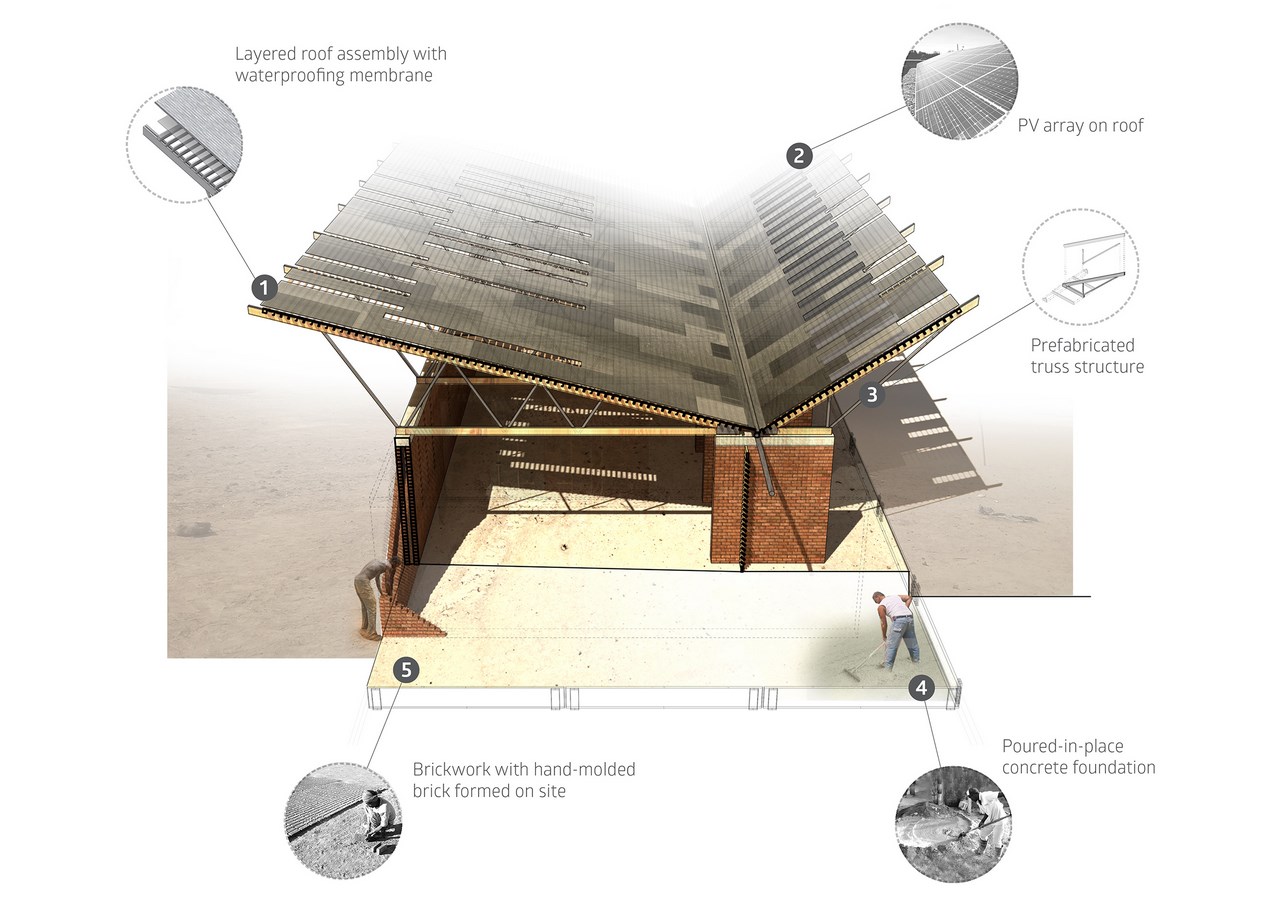
The project marries traditional methods of construction with advanced technology; hand-molded masonry walls, strategically placed shade trees and simple corrugated metal roofs all combine with state-of-the-art recording and video equipment assimilate into a symbol for future Malian people. Passive techniques are critical because the site is not connected to any existing infrastructure; metal roofs are folded to collect rainwater for cisterns while also encouraging air flow in and through interior spaces below; for power, PV panels take advantage of the abundance of equatorial solar days.
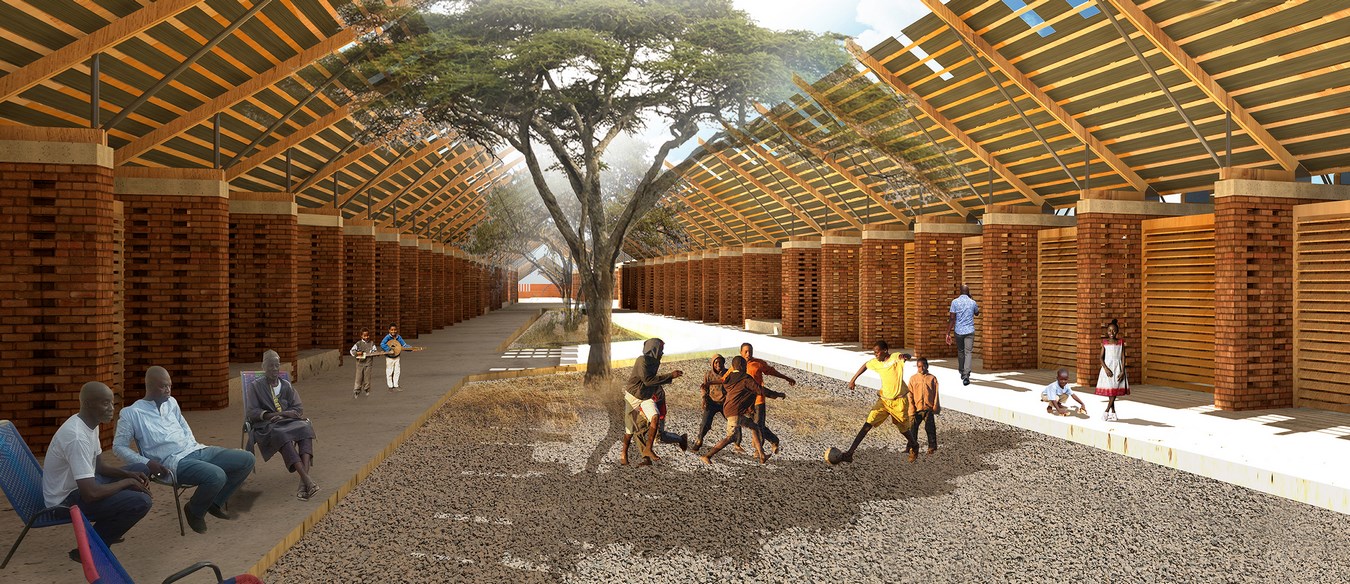
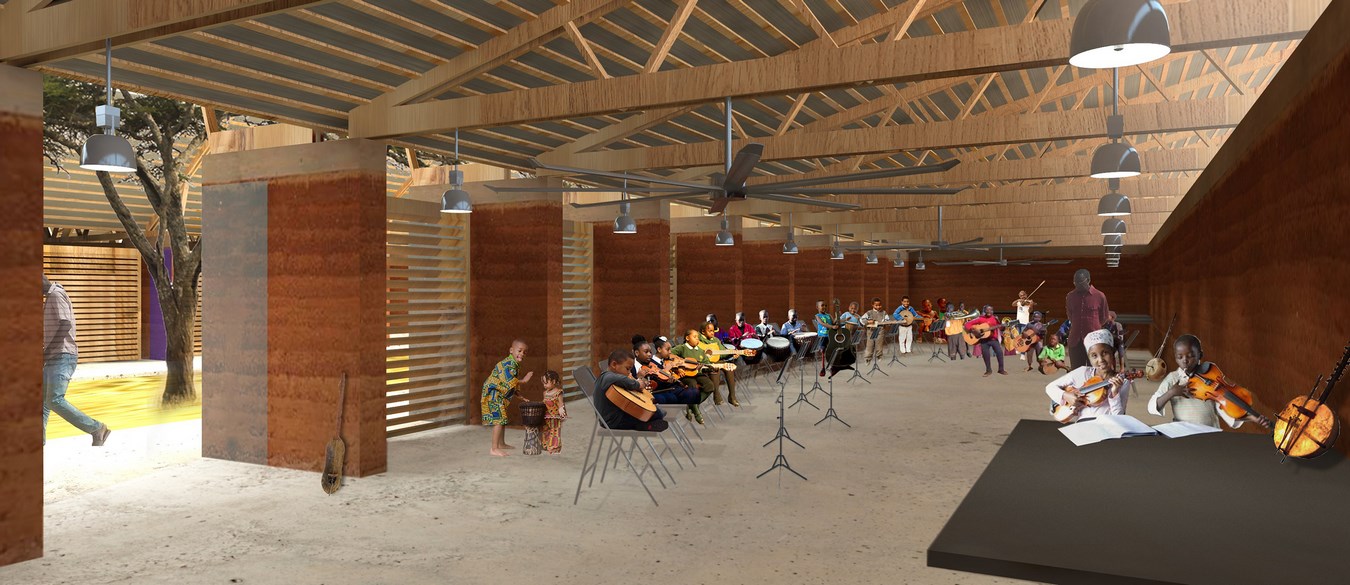
Another great opportunity. APR’s next award Global Future Design Awards 2019 is open for Registration. Don’t miss the chance, its a huge platform for architects.


